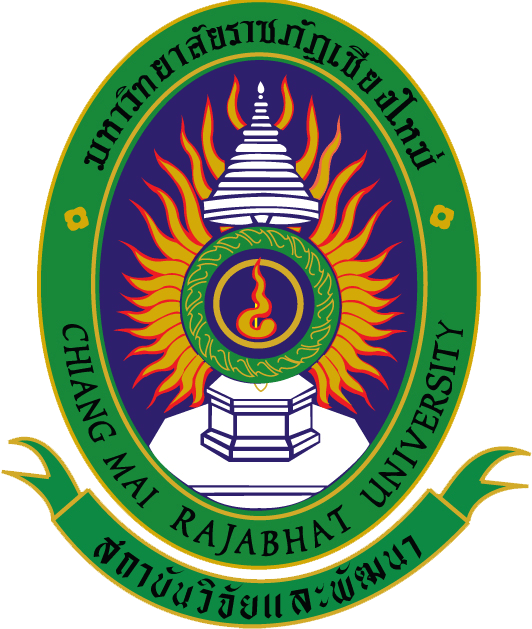
ระบบสารสนเทศงานวิจัย สถาบันวิจัยและพัฒนา มหาวิทยาลัยราชภัฏเชียงใหม่
Research Information System(RIS)
การศึกษาฤทธิ์ทางชีวภาพของน้ำหมักเมี่ยงผลิตภัณฑ์อาหารหมักพื้นบ้านทางภาคเหนือตอนบน
อาจารย์ ดร.อัจฉรียา ชมเชย
คณะวิทยาศาสตร์และเทคโนโลยี
คำสำคัญ :
เลขทะเบียน :
404-57-SCI-MUA
บทคัดย่อ
งานวิจัยครั้งนี้มีวัตถุประสงค์เพื่อศึกษาการสกัดสารด้วยตัวทาละลายชนิดต่างๆของใบเมี่ยงหมักและน้าหมักเมี่ยงที่ได้จากกระบวนการหมักตามภูมิปัญญาท้องถิ่นของชุมชนบ้านแม่กาปอง อาเภอแม่ออน จังหวัดเชียงใหม่ และศึกษาฤทธิ์ทางชีวภาพในการต้านอนุมูลอิสระ ปริมาณฟีนอลิกทั้งหมด การต้านแบคทีเรีย และการต้านเชื้อรา โดยเก็บตัวอย่างใบเมี่ยงหมักและน้าหมักเมี่ยงซึ่งเป็นของเหลวสีเหลืองอมเขียว กลิ่นเหม็นเปรี้ยว มีความเป็นกรด มีอายุการหมัก 6 เดือน มาสกัดสารด้วยตัวทาละลายไดคลอโรมีเทนและ 70% เอทานอล ได้สารสกัด 4 ตัวอย่าง ได้แก่ น้าหมักเมี่ยงชั้นน้า น้าหมักเมี่ยงชั้นไดคลอโรมีเทน ใบเมี่ยงหมักชั้นเอทานอล และใบเมี่ยงหมักชั้นไดคลอโรมีเทน คิดเป็นผลได้ของสารสกัดเท่ากับ 1.1%, 0.1%, 17.8% และ 1.7% ตามลาดับ จากการวิเคราะห์การต้านอนุมูลอิสระด้วยวิธี DPPH และ ABTS พบว่า สารสกัดทั้งน้าหมักเมี่ยงและใบเมี่ยงหมักทุกตัวอย่างแสดงคุณสมบัติในการต้านอนุมูลอิสระโดยเรียงลาดับสารสกัดที่มีฤทธิ์จากมากไปน้อยดังนี้ น้าหมักเมี่ยงชั้นน้า > ใบเมี่ยงหมักชั้นเอทานอล > น้าหมักเมี่ยงชั้นไดคลอโรมีเทน > ใบเมี่ยงหมักชั้นไดคลอโรมีเทน อย่างไรก็ตามเมื่อเทียบกับสารมาตรฐาน Trolox พบว่ามีฤทธิ์ต้านอนุมูลอิสระน้อยกว่าประมาณ 1.5 ถึง 4.5 เท่า ปริมาณฟีนอลิกทั้งหมดในสารสกัดทดสอบด้วยการวัดค่าการดูดกลืนแสงของปฏิกิริยาตามวิธี Folin-Ciocalteu แล้วคานวณเป็น gallic acid equivalents (GAE) ปริมาณ ฟีนอลิกทั้งหมดมีความสัมพันธ์กับฤทธิ์ต้านอนุมูลอิสระ โดยตัวอย่างสารสกัดที่มีปริมาณฟีนอลิกทั้งหมดสูงจะแสดงคุณสมบัติการต้านอนุมูลอิสระสูงเช่นกัน ฤทธิ์การต้านจุลินทรีย์ของสารสกัด พบว่า สารสกัดน้าหมักเมี่ยงชั้นไดคลอโรมีเทนมีฤทธิ์ยับยั้งเชื้อแบคทีเรีย ได้แก่ Bacillus subtilis, Klebsiella pneumoniae, Proteus vulgaris และ Proteus mirabilis ได้ โดยมีค่า Minimum Bactericidal Concentration (MBC) เท่ากับ 1,250 mg/ml, 2,500 mg/ml, 1,250 mg/ml และ 1,250 mg/ml ตามลาดับ สามารถยับยั้งการเจริญเชื้อราโรคพืช ได้แก่ เชื้อ Rhizoctonia sp., Sclerotium sp., Helminthosporium sp., Alternaria sp. และ Collectotrichum sp. โดยมีค่าการยับยั้งมากกว่า 60% และมีฤทธิ์ต้านการเจริญของเชื้อราโรคกลาก ได้แก่ Trichophyton mentagrophytes, T. tonsurans, T. rubrum และ Epidermophyton floccosum โดยมีค่าการยับยั้งสูงกว่า 70%
Abstract
The aim of this study was to investigated various solvent extracts of pickled tea leave and fermented liquid from fermentation of pickled tea leave by local wisdom in Mae-Kampong, Mae-On District, Chiang Mai Province to display potent antioxidant activity, total phenolic contents, antibacterial, antifungal in order to find possible sources for bioactive substances in pharmaceutical and agriculture application. Samples of pickled tea leave and fermented liquid which yellow-greenish color, strong fermented odor and acidity in fermented period of 6 months were collected and extracted with dichloromethane and 70% ethanol. Four types of crude extract including water crude extract of fermented liquid, dichloromethane crude extract of fermented liquid, ethanol crude extract of pickled tea leave and dichloromethane crude extract of pickled tea leave with crude extract yields were investigated with percent yield 1.1%, 0.1%, 17.8% and 1.7%, respectively. The antioxidative was examined by DPPH and ABTS method. All samples of crude extract of fermented liquid and pickled tea leave showed antioxidant effects from strong activity to low activity as water crude extract of fermented liquid > ethanol crude extract of pickled tea leave > dichloromethane crude extract of fermented liquid > dichloromethane crude extract of pickled tea leave. However, the antioxidant activity of crude extracts were lower about 1.5 to 4.5 times comparing with standard trolox. The content of total phenolics in the extracts was determined spectrometrically according to the Folin-Ciocalteu procedure and calculated as gallic acid equivalents (GAE). Total phenolic compounds was not related to the antioxidant activity. The high content of total phenolic in crude extracts also showed the high activity. Antimicrobial of crude extracts found dichloromethane crude extract of fermented liquid inhibited the growth of bacteria including Bacillus subtilis, Klebsiella pneumoniae, Proteus vulgaris and Proteus mirabilis with Minimum Bactericidal Concentration (MBC) were 1,250 mg/ml, 2,500 mg/ml, 1,250 mg/ml and 1,250 mg/ml, respectively. The crude extract also showed antifungal activity in plant pathogens such as Rhizoctonia sp., Sclerotium sp., Helminthosporium sp., Alternaria sp. and Collectotrichum sp. with inhibition activity more than 60%. In addition, this crude extract also showed inhibition activity on Dermatophytes such as Trichophyton mentagrophytes, T. tonsurans, T. rubrum and Epidermophyton floccosum with higher inhibition activity than 70%.
ไฟล์งานวิจัย
อยู่ในระหว่างการปรับปรุงเนื้อหา1089 31 ม.ค. 2560
สำนักงานคณะกรรมการการอุดมศึกษา (สกอ.)
328 ถ.ศรีอยุธยา แขวงทุ่งพญาไท เขตราชเทวี กรุงเทพฯ 10400
0-2610-5200
pr_mua@mua.go.th